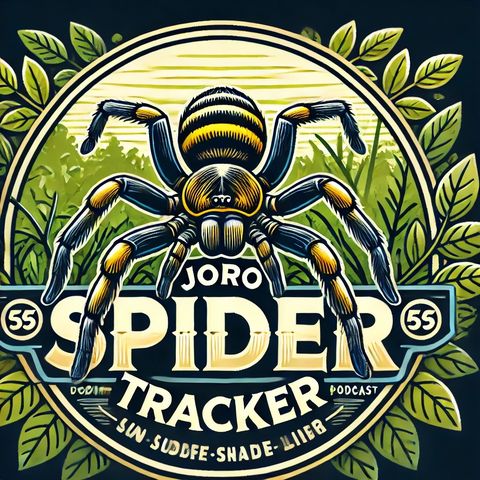"Joro Spiders Conquer Pennsylvania: A Concerning Yet Intriguing Invasion"

Download and listen anywhere
Download your favorite episodes and enjoy them, wherever you are! Sign up or log in now to access offline listening.
"Joro Spiders Conquer Pennsylvania: A Concerning Yet Intriguing Invasion"
This is an automatically generated transcript. Please note that complete accuracy is not guaranteed.
Description
The expansion of the Joro spider's range into Pennsylvania marks another significant step in their colonization of the United States. These spiders, native to East Asia, were first detected in...
show moreScientifically known as Trichonephila clavata, Joro spiders belong to the orb-weaver family. They are notable for their size and the impressive webs they spin. The body of a female Joro spider can reach lengths of 0.75 to 1.2 inches, with leg spans of about 4 inches. Their bright yellow, blue, and red markings make them easily recognizable and quite striking. Males are much smaller and less conspicuous.
The webs of Joro spiders can be quite large, spanning up to 10 feet wide. These webs are not just vast; they are also robust. The silk they produce is stronger than that of other spiders, enabling their webs to withstand the impact of larger insects and small birds.
One of the reasons why Joro spiders have been able to spread quickly across states is their mode of traveling, which is known as ballooning. Ballooning involves using their silk to catch the wind, allowing them to travel long distances, sometimes crossing large bodies of water.
Despite their intimidating size and appearance, Joro spiders are not harmful to humans. They are venomous, like all spiders, but their venom is not potent enough to cause issues for humans beyond a mild reaction to a bite, similar to a bee sting. This low risk makes them less of a direct threat compared to other invasive species.
Moreover, Joro spiders might actually contribute positively to their new environments. Research suggests that they could aid in controlling pest populations, which could be beneficial for agriculture and the ecosystem overall. Their presence also potentially offers a new prey resource for native predators, integrating them into existing food webs.
However, the impact of Joro spiders on local ecosystems where they become established remains a subject of active research. Concerns exist about the possible displacement of native species and the broader ecological ramifications.
As the Joro spider continues its spread, ongoing studies will be crucial in understanding how they fit into and affect the native ecosystems they enter. This information will aid in managing their population growth and mitigating any possible negative impacts on native species and habitats.
Information
| Author | QP-4 |
| Organization | William Corbin |
| Website | - |
| Tags |
Copyright 2024 - Spreaker Inc. an iHeartMedia Company

Comments